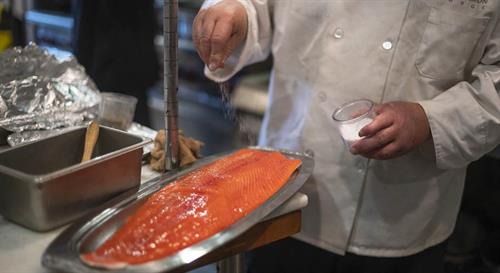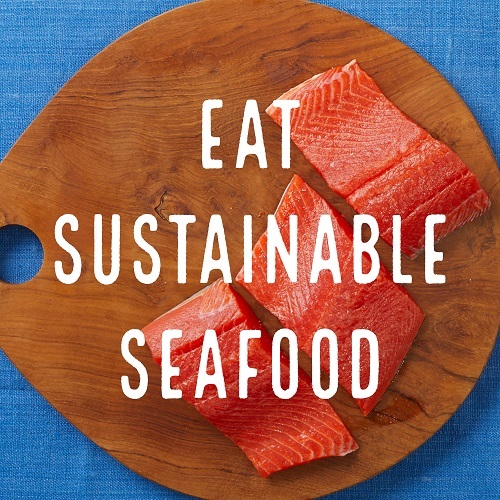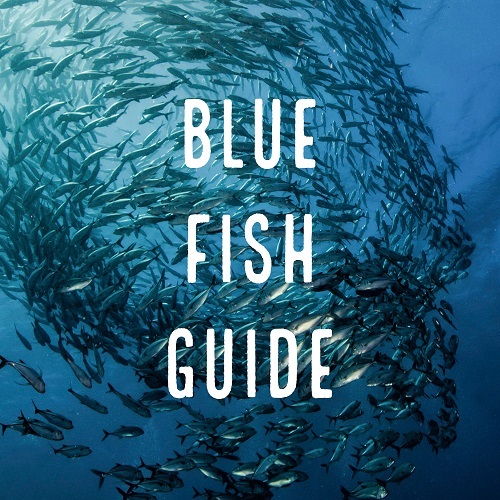Is salmon sustainable?
At the MSC, we believe that there is no such thing as a sustainable species, only sustainable stocks (‘stock’ is another word for group or population of fish). There are several different stocks of salmon, many of which are MSC certified and can be found in stores and restaurants with the blue fish label throughout North America.
Long story short: if your salmon has the MSC blue fish label on it, it’s sustainable!
That means enough salmon are left to continue reproducing, the fish were caught in a way that minimizes environmental impact, and there is responsible oversight so any changes to the stock or the environment are monitored and can be responded to as needed. Salmon with the MSC blue fish label is certified sustainable and can be traced back to a well-managed fishery.
-scr.jpg?sfvrsn=3a0e14d5_0&MaxWidth=500&MaxHeight=500&ScaleUp=false&Quality=High&Method=ResizeFitToAreaArguments&Signature=D92E0EBDCE8451E7082B359A13CB5042321C6E9B)
How many types of salmon are there?
There are two main types of salmon: Pacific and Atlantic. Most commercially available Atlantic salmon is farmed, and there is no MSC Certified Atlantic salmon. However, MSC certified wild Pacific salmon is readily available. There are seven species of Pacific salmon, five of which are found in North America: sockeye or red, king or chinook, coho or silver, pink, and chum. Each species has slightly different characteristics, but in general, salmon has firm texture with flesh that is red to orange in color and is high in omega-3 fatty acids.

Did you know? Salmon are anadromous. This means they spend part of their lives in freshwater and part in saltwater. They are born in freshwater where they spend a few months to a few years developing and growing before making their way out to sea for much of their adult lives. Eventually, they find their way back to freshwater, returning to the very river they were born in to spawn the next generation of salmon!
Sockeye
King or Chinook
Coho
Pink
Keta or Chum
Is salmon healthy?
Salmon is a nutritious fish, according to the Seafood Nutrition Partnership. It is one of the best sources of omega-3 fatty acids, which benefit the brain, heart, and eyes. Salmon is a high-quality protein, which means it helps protect bone health and prevent muscle loss, among other benefits. It also has many other nutrients like B-vitamins, potassium, and selenium.

Where can I find sustainable salmon?
MSC certified salmon is available in most grocery stores! Check the chilled section for smoked salmon, the canned foods aisle for cans and pouches, the frozen section, and fresh fish counter.
Tips on buying the best salmon
- Buying in season. If you’re looking to plate wild and fresh salmon that’s in season, it’s best to shop between late spring through early fall. But don’t forget that delicious smoked, frozen, and canned options are available year-round. They’re preserved during peak freshness, so you don’t lose out on flavor or nutrients.
- Shop by color. Choose fillets that are bright and saturated in color. Look for hues ranging from deep shades of red to vibrant coral or bright pink.
- Choose sustainable options. To know the salmon is wild and certified sustainable, make sure it has the MSC blue fish label on it!
How do I cook salmon?
Since each salmon variety has a slightly different flavor profile, it can be prepared many different ways.
- Sockeye: Sockeye salmon is lower in fat, which makes for a fuller-flavored, more gamey bite. It is most often sold smoked, in fish burgers, and by the fillet. However, it's also a great candidate for grilling whole or serving raw in a poke bowl.
- King: For the highest fat content and silken texture look for king salmon. This variety can be griddled, poached, or even smoked without the risk of drying out. Try grilling over charcoal for a charred, smoky finish.
- Coho: Coho (silver) is a much leaner variety that’s perfect for those who prefer a subtle taste. Because of its medium fat content and small size, coho is best prepared poached or roasted whole with aromatic herbs.
- Pink: Pink salmon is the softest and most delicate type of salmon, which has a smaller flake size. Because of its low fat content, most of this variety is canned or pouched. Try incorporating it flaked onto a salad or cooked into salmon cakes.
- Keta: Because this keta is high in protein and low in fat, it has become a popular choice amongst healthy eaters. This variety is best for grilling or roasting because it is extremely firm and has less oil than sockeye or king.
For a deeper dive into the salmon varieties, check out the Foodie's Guide to Sustainable Salmon.
Easy salmon recipes

Featured{{item.Headline}}
{{item.Description}}
Discover more
Meet the Fisherman
Meet Emily, a fifth-generation Alaska native commercial fisherman who catches MSC certified salmon in Bristol Bay, Alaska.
A Sustainability Story
Salmon has been synonymous with Alaska since the beginning. Read about the rich history of the state's relationship with this important fish.

Read
Head to the MSC blog for the latest news about the MSC, sustainable seafood, and general ocean health.

Eat
Get inspired to eat more sustainable seafood with recipes and cooking tips, foodie guides, and more!

Shop
Check out this guide on how to find sustainable seafood with the MSC blue fish label.



